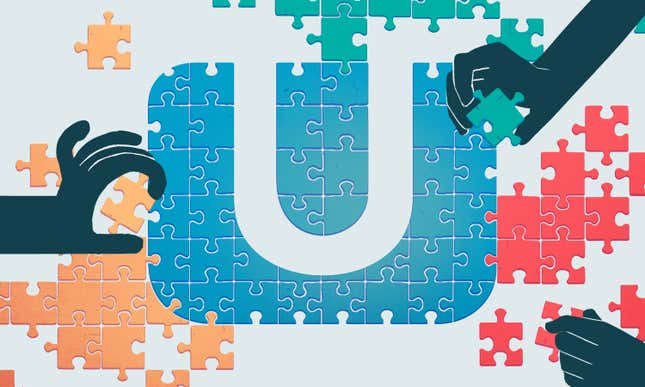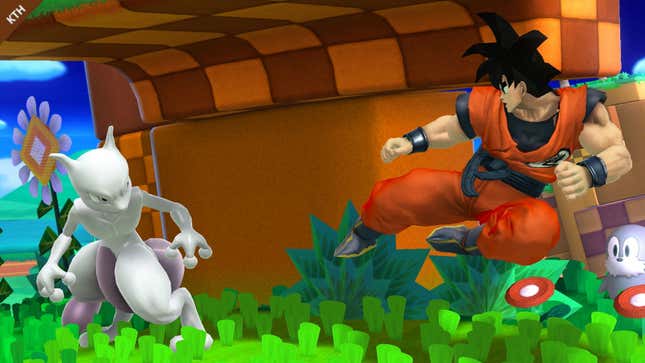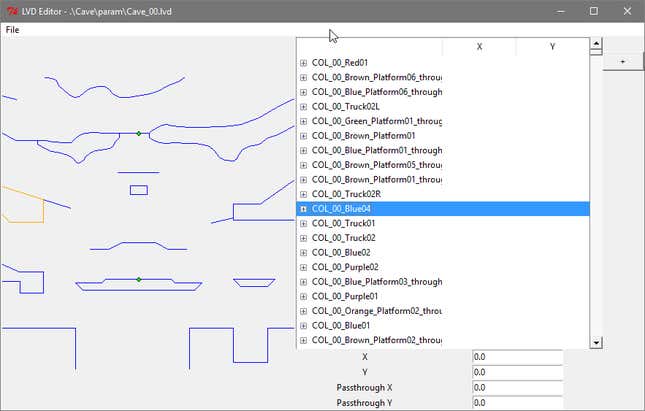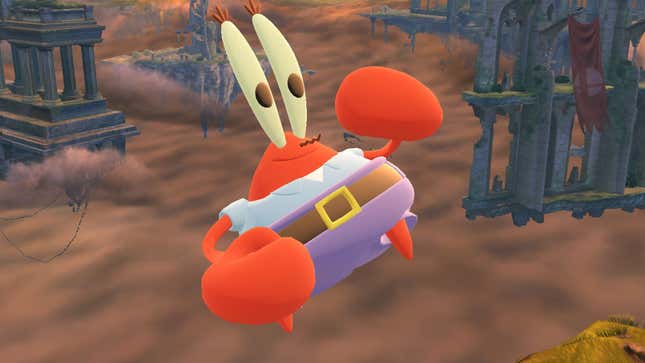
In many ways, the Wii U was a flop. Passionate modders haven’t given up on the system, however. Instead, many have spent the the last two years breathing new life into the neglected console, hacking new characters, new levels, and new modes into their favorite games. As far as the modding community is concerned, rumors of the Wii U’s demise are greatly exaggerated.
Super Smash Bros. Wii U
Super Smash Bros is undoubtedly the centerpiece of the Wii U modding scene. Colloquially referred to as Sm4sh, the iconic brawler boasts a huge variety of fan-made stages, character skins, and balance tweaks driven by community feedback. From a Shadow Moses stage based on Metal Gear Solid to the addition of Goku from Dragon Ball Z, Sm4sh modders are constantly reinvigorating the game with a steady supply of fresh content.

The Sm4sh modding scene wasn’t always so vibrant, though. Early on, if a modder wanted to make a new level for Sm4sh, they could only do so by manipulating raw hex data, a process that was deeply complex and time-consuming. Unlike Skyrim or Starcraft II, where official editing tools are built-in, Sm4sh’s file formats were about as user-unfriendly as you can get. Fortunately, one modder took it upon himself to make sure that anyone, no matter their skill, would have the necessary tools to make something cool.
“When I started making Wii U tools,” says jam1garner, “I definitely had a mentality that if any old idiot couldn’t make mods with existing tools then it wasn’t easy enough for experienced modders, model makers, artists and other talented people to be able to effortlessly produce great content for people like me to enjoy.”
Despite having only a basic understanding of Sm4sh’s file types and code structure at the time, jam1garner, along with the help of modder smb123w64gb, cobbled together a working editor in a few months. It was a resounding success, providing a paint-like interface for drawing wireframe stages with no need for editing text files that numerous other modders leveraged the editor to build their own custom levels. Jam1garner went on to start building Smash Forge, a broader, more robust editor capable of modding all Sm4sh file types, not only stages.

“Smash 4 modding is as strong as ever and still has momentum,” he says. The same goes for homebrew development, like jam1garner’s favorite, a hack that enables use of the Sm4sh Gamecube controller adaptor in games other than Sm4sh.
“I feel that mods in all the devices I use are so integral to my usage of the products,” as he aptly puts it. “I don’t need them to have fun but if I’m already having fun it gives me more use out of something I otherwise wouldn’t play as much.”
It’s this ability to extend the enjoyment of a game that got DeadMK into modding in the first place. After pouring countless hours into Mario Kart Wii, the modder yearned for more: more characters, more tracks, more variety. Mods granted him all that and more, and once he’d glimpsed the boundless potential they offered, he had to get involved for himself.
Picking up a Wii U and a copy of Sm4sh, he started creating his own custom skins and music tracks, posting videos of his efforts online. Soon, his work caught the attention of the modders leading the Sm4sh Research community, a group dedicated to sharing resources for Smash mods. Since then, DeadMK’s mods have given thousands of Wii U owners reason to keep their consoles plugged in.
Some of his most popular work has been remakes of the jungle stage from Super Smash Bros Brawl’s Subspace Emissary mode, the Yoshi’s Story stage from Super Smash Bros Melee, and the Pokemon Stadium 2 stage from Project M, itself a fan mod of Super Smash Bros Brawl. Celebrating the older Smash games by modding them into Sm4sh has become something of DeadMK’s specialty.
“With the mods we can bring back old characters (Wolf for example), making people nostalgic,” he says. “It just makes the game more enjoyable in general.”
Ultimately, this is what DeadMK believes makes Wii U modding as a whole so valuable.
“People like change, they like when their routine is different,” he says. “When I’m booting SmashWiiU with my custom music and skins, I don’t get bored of it.”
And that’s the thing with modding: it’s as much for the modder’s enjoyment as anyone else’s.
“Modding my favorite game to make it more enjoyable for me and my friends,” says DeadMK. “Why wouldn’t I do that?”
Newer Super Mario Bros U
On release, New Super Mario Bros U was a fairly standard 2D Mario game. Within those familiar foundations, though, MrRean saw potential. By studying the game’s raw files, the veteran Wii modder discovered a wealth of unused content begging to be played, from a bolt-controlled elevator to a spinning platform girded by fireballs. After documenting his findings, MrRean rounded up a number of other experienced modders and began work on Newer Super Mario Bros U, a realization of NSMBU’s seemingly unfulfilled potential.
To accomplish that vision, MrRean had to reverse-engineer game logic and file formats through relentless trial and error. It’s been tough, but the payoff has been worth it.
“[You] can’t learn if you just get through things easily,” he says. “This challenge let me learn more about games.” At the same time, it’s been thrilling to discover what the Wii U is truly capable of. “Exploring is amazing. There was lots to be documented and it was a lot to explore which was exciting.”
The mods he’s built since then have been tremendous: notably, the biggest one features 8 hand-crafted worlds, new enemies (such as snowball-hurling walrus), and an entirely original soundtrack. Titled Newer Super Mario Bros U, it is less a mod than a whole new game. And while a new 2D Mario game might seem somewhat redundant in the wake of Super Mario Maker, the team also constructed something they call a ‘Satoru’ level editor that allows for a wider degree of creative freedom that Mario Maker lacks. From being able to mix different tilesets within a single level, to the addition of slopes and underwater levels, the ‘Satoru’ editor is helping the team make Newer Super Mario Bros U feel like a fully-fledged sequel in more than name alone.
Even though the Wii U’s audience is relatively small, and the audience for Wii U mods even smaller, MrRean believes that works in the modding community’s favor. Without a constant crowd of fans judging their every decision, they have the creative freedom to try new things without fear of backlash. “The smaller [the] audience, the more you can explore. The less people you have, the easier communication is. It gives modders like me more chance to discover new things about the games on the [Wii] U.”
When it comes to Nintendo’s lackluster support of the Wii U, MrRean likes to see the silver lining. “If Nintendo brushes it off, that’s more opportunity for us. It makes us stand out more.”
Community
The Wii U modding community is as much about bringing people together as it is about creating great content. SonicBrawler, creator of popular character mods for Sm4sh like Shadow the Hedgehog and D.Va from Overwatch, treasures the many friends and fans he’s made through his modding.
“It makes me feel good that I can entertain/help people, and that I can make friends doing what I love,” he says.
Sometimes, when attending local Smash Bros. tournaments, fans will come up to him and thank him for spicing up their favorite game. That sense of community has kept SonicBrawler making mods for the Wii U, even as Nintendo has abandoned it.

“A lot of my closest friends I have made through the Wii U. My college has a Smash Bros weekly and so every Saturday I bring my set-up with mods and people have fun playing as Mr. Krabs against a Shopping Cart, or Shy Guy taking on the weird internet meme of Sanic. Seeing people have a good time because of something I did makes me really happy.”
Death and the Switch
The elephant in the room is, of course, the Nintendo Switch. At first blush, it might seem like the final nail in the Wii U’s coffin, but the modding community isn’t ready to read it its last rites just yet.
“I feel the Wii U scene will likely continue to grow for a while,” says jam1garner. His fellow modders agree. The release of the Switch won’t stop the devoted community from exploring the limits of both the Wii U’s software library and their own creativity—not until it too gets cracked, that is. DeadMK suspects that’ll take at least 2 years, and even then, the Wii U scene might live on, just as the modding scenes for the original Wii and the PS3 remain active to this day.
“I really hope Smash 4 is ported [to the Switch],” says jam1garner. “If it is, I imagine a lot of the filetypes would stay [the same], meaning the modding scene for it would have one of the strongest starts on modding of any game ever.” Since Sm4sh’s file structure is designed for porting across multiple platforms, with a common architecture across Wii U, 3DS, and even other games like Pokken Tournament, the Wii U’s legacy might still live on.
No matter what happens with the Switch, one thing remains true: modding has given the Wii U something Nintendo never could.
“I can’t speak for the majority,” says jam1garner, “but I feel it really made my Wii U a lot more fun and it might have been collecting dust otherwise.”
Matt Sayer is an analyst programmer from Melbourne, Australia with a passion for psychology and the cognitive biases that subconsciously influence our daily life. If you spot any typos or inexplicable references to birds, it’s probably one of his cats ‘helping out.’ You can find him on Twitter @sezonguitar.